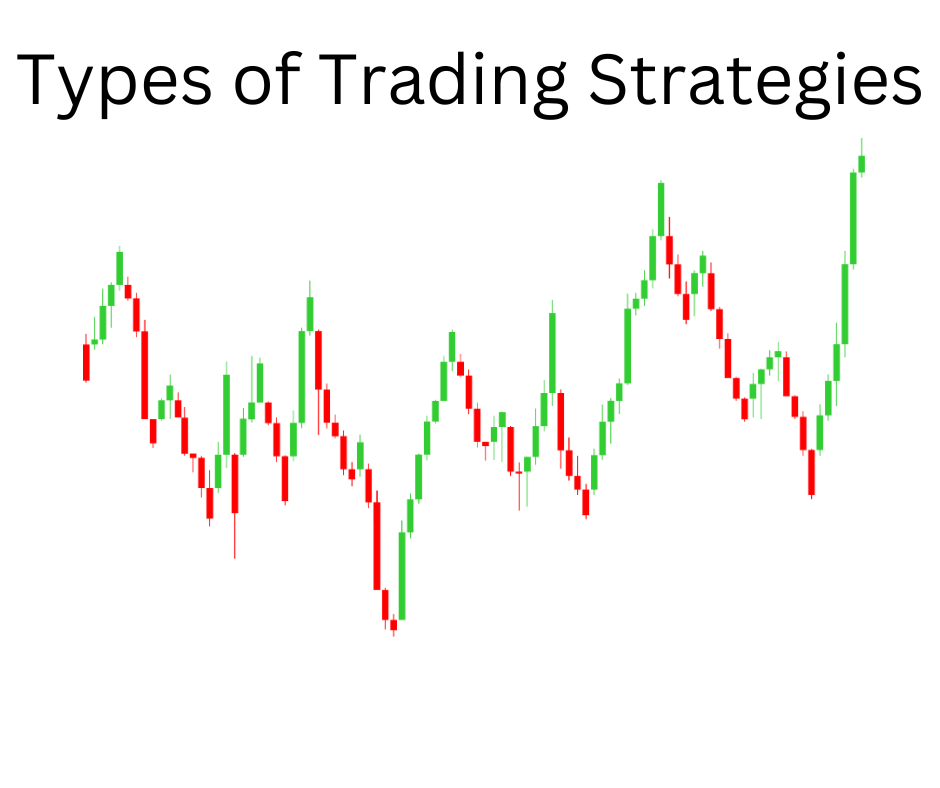Forex trading is an exciting field that offers traders the opportunity to make profits by speculating on the movement of currency exchange rates.
There are various forex trading strategies that traders can use to make informed decisions and increase their chances of success.
In this article, we will explore the different types of forex trading strategies, including their advantages and disadvantages.We will also provide insights on how traders can choose the most appropriate strategy for their trading style and goals.
Forex trading is the process of buying and selling currencies in the global foreign exchange market. The forex market is the largest financial market in the world, with a daily trading volume of over $5 trillion.
It operates 24 hours a day, five days a week, and offers traders the opportunity to profit from currency exchange rate fluctuations. Forex trading requires a solid understanding of the market, as well as a well-planned trading strategy that matches the trader’s goals and risk tolerance.

Understanding Forex Trading
Before diving into the different types of forex trading strategies, it’s essential to understand the basic concepts of forex trading. Forex trading involves the buying and selling of currency pairs, such as the EUR/USD, GBP/USD, or USD/JPY. Traders can profit by speculating on the movement of currency exchange rates. For example, if a trader believes that the Euro will appreciate against the US Dollar, they can buy the EUR/USD currency pair, and if their prediction is correct, they can sell it for a profit.
To be successful in forex trading, traders need to analyze the market and make informed trading decisions. Forex trading strategies provide a framework for analyzing the market and making trading decisions. There are various types of forex trading strategies, each with its own unique advantages and disadvantages.
Technical Analysis Strategies
Technical analysis is the study of past market data, primarily price and volume, to forecast future price movements. Technical analysis strategies are based on the assumption that market trends, patterns, and price movements repeat over time. Technical traders use charts and technical indicators to identify trading opportunities and make trading decisions.
Moving Average Strategy
The Moving Average strategy is a simple technical analysis strategy that uses moving averages to identify the direction of the trend. Moving averages are calculated by averaging the price of an asset over a specific period. The Moving Average strategy involves buying when the asset’s price is above the moving average and selling when it’s below the moving average.
Support and Resistance Strategy
The Support and Resistance strategy is a technical analysis strategy that involves identifying key levels of support and resistance on a chart. Support levels are areas where buying pressure is stronger than selling pressure, while resistance levels are areas where selling pressure is stronger than buying pressure. The Support and Resistance strategy involves buying when the price is near a support level and selling when it’s near a resistance level.
Trendline Strategy
The Trendline strategy is a technical analysis strategy that involves drawing lines on a chart to connect the highs or lows of an asset’s price movement. Trendlines can help traders identify the direction of the trend and potential areas of support or resistance. The Trendline strategy involves buying when the price breaks above a downtrend line or selling when the price breaks below an uptrend line.
Fundamental Analysis Strategies
Fundamental analysis is the study of economic, financial, and other qualitative and quantitative factors that can affect an asset’s price. Fundamental analysis strategies are based on the assumption that the market is driven by economic and financial factors. Fundamental traders analyze economic indicators, interest rates, central bank policies, and news events to make trading decisions.
Interest Rate Strategy
The Interest Rate strategy is a fundamental analysis strategy that involves analyzing the interest rates of different countries. Interest rates can affect a currency’s value, as higher interest rates can attract foreign investment and strengthen the currency. The Interest Rate strategy involves buying currencies with higher interest rates and selling currencies with lower interest rates.
Economic Indicators Strategy
The Economic Indicators strategy is a fundamental analysis strategy that involves analyzing economic indicators, such as Gross Domestic Product (GDP), inflation, employment, and retail sales. Economic indicators can provide insights into a country’s economic health and can affect its currency’s value. The Economic Indicators strategy involves buying currencies of countries with positive economic indicators and selling currencies of countries with negative economic indicators.
News Trading Strategy
The News Trading strategy is a fundamental analysis strategy that involves analyzing news events and their potential impact on the market. News events, such as central bank announcements, economic data releases, and geopolitical events, can cause significant market volatility. The News Trading strategy involves buying or selling currencies based on the news events and their impact on the market.
Price Action Strategies
Price Action is the study of the price movement of an asset to identify trading opportunities. Price Action strategies are based on the assumption that the market reflects all available information, and traders can make trading decisions by analyzing the price movement. Price Action traders use chart patterns, candlestick patterns, and other price-related indicators to make trading decisions.
Candlestick Patterns Strategy
The Candlestick Patterns strategy is a Price Action strategy that involves analyzing candlestick patterns to identify potential price movements. Candlestick patterns can provide insights into market sentiment and can help traders identify potential areas of support or resistance. The Candlestick Patterns strategy involves buying or selling based on the candlestick patterns and their potential impact on the market.
Price Action Patterns Strategy
The Price Action Patterns strategy is a Price Action strategy that involves analyzing chart patterns, such as head and shoulders, triangles, and double tops, to identify potential price movements. Chart patterns can provide insights into the direction of the trend and potential areas of support or resistance. The Price Action Patterns strategy involves buying or selling based on the chart patterns and their potential impact on the market.
Chart Patterns Strategy
The Chart Patterns strategy is a Price Action strategy that involves analyzing different chart patterns to identify potential price movements. Chart patterns can provide insights into the market sentiment and can help traders identify potential areas of support or resistance. The Chart Patterns strategy involves buying or selling based on the chart patterns and their potential impact on the market.
Scalping Strategies
Scalping is a short-term trading strategy that involves making quick trades to profit from small price movements. Scalping strategies are based on the assumption that even small price movements can create trading opportunities. Scalpers use fast-moving indicators and tight stop-loss orders to make quick trading decisions.
Quick Scalping Strategy
The Quick Scalping strategy is a Scalping strategy that involves making quick trades to profit from small price movements. The Quick Scalping strategy involves buying or selling based on fast-moving indicators, such as the Moving Average or the Relative Strength Index (RSI), and using tight stop-loss orders to limit the risk.
News Scalping Strategy
The News Scalping strategy is a Scalping strategy that involves making quick trades based on news events and their potential impact on the market. The News Scalping strategy involves buying or selling based on the news events and their potential impact on the market, using fast-moving indicators and tight stop-loss orders to limit the risk.
High-Frequency Scalping Strategy
The High-Frequency Scalping strategy is a Scalping strategy that involves making a large number of quick trades to profit from small price movements. The High-Frequency Scalping strategy involves using advanced algorithms and high-speed trading platforms to execute trades quickly and efficiently.
Swing Trading Strategies
Swing trading is a medium-term trading strategy that involves holding positions for a few days to a few weeks to profit from price movements. Swing trading strategies are based on the assumption that price movements tend to swing between support and resistance levels. Swing traders use chart patterns and technical indicators to identify potential swing trading opportunities.
Breakout Strategy
The Breakout strategy is a Swing Trading strategy that involves buying when the price breaks above a resistance level or selling when the price breaks below a support level. The Breakout strategy involves using technical indicators, such as the Moving Average or the Bollinger Bands, to identify potential breakout opportunities.
Pullback Strategy
The Pullback strategy is a Swing Trading strategy that involves buying when the price pulls back to a support level or selling when the price rallies to a resistance level. The Pullback strategy involves using technical indicators, such as the Relative Strength Index or the Stochastic Oscillator, to identify potential pullback opportunities.
Trend Trading Strategy
The Trend Trading strategy is a Swing Trading strategy that involves buying when the price is in an uptrend or selling when the price is in a downtrend. The Trend Trading strategy involves using technical indicators, such as the Moving Average or the Ichimoku Cloud, to identify the direction of the trend and potential entry points.
Position Trading Strategies
Position trading is a long-term trading strategy that involves holding positions for weeks, months, or even years to profit from long-term trends. Position trading strategies are based on the assumption that the market tends to move in long-term trends. Position traders use fundamental analysis and long-term technical indicators to identify potential trading opportunities.
Carry Trading Strategy
The Carry Trading strategy is a Position Trading strategy that involves buying currencies with higher interest rates and selling currencies with lower interest rates. The Carry Trading strategy involves holding positions for long periods and earning interest rate differentials as the positions appreciate.
Long-Term Trading Strategy
The Long-Term Trading strategy is a Position Trading strategy that involves holding positions for extended periods to profit from long-term trends. The Long-Term Trading strategy involves using fundamental analysis and long-term technical indicators to identify potential trading opportunities and holding positions for months or even years.
Trading the Dips Strategy
The Trading the Dips strategy is a Position Trading strategy that involves buying when the price dips to a support level and selling when the price rallies to a resistance level. The Trading the Dips strategy involves using technical indicators, such as the Moving Average or the Fibonacci retracement levels, to identify potential entry points.
Conclusion
Forex trading offers traders various trading opportunities to profit from currency exchange rate fluctuations. However, successful forex trading requires a solid understanding of the market and a well-planned trading strategy that matches the trader’s goals and risk tolerance.
